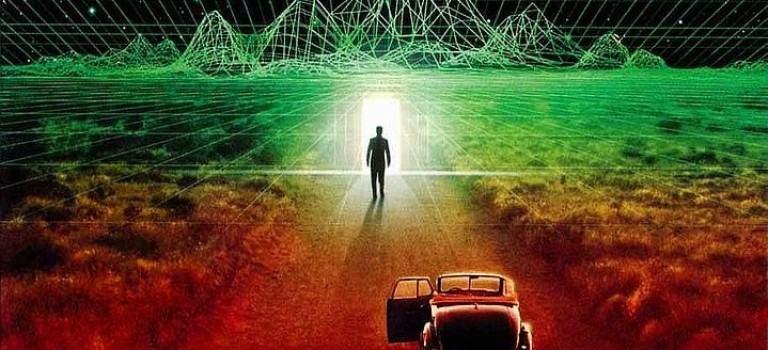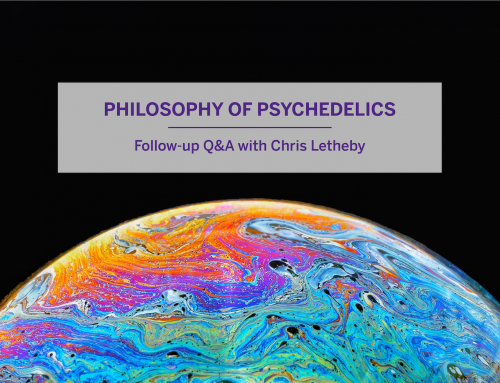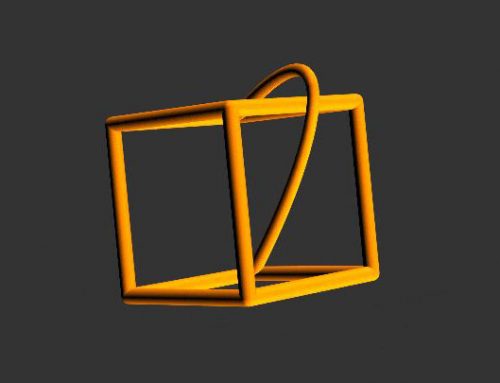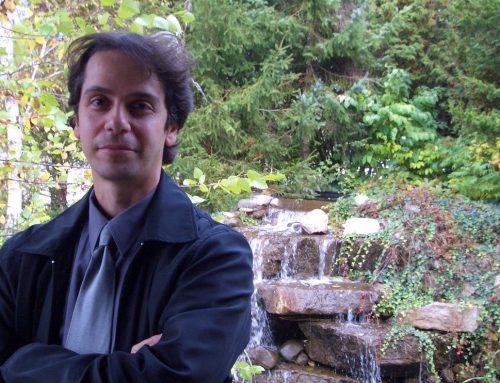This year’s (2016) Isaac Asimov memorial debate was dedicated to the question “Is the Universe a Simulation?”. A recent article in The Guardian (Oct 11, 2016) also was about the exact same question. In this post I discuss this hypothesis, but with an eye on how the question was pursued during the I. Asimov memorial debate. The debate took place last April, at the American Museum of Natural History, in New York and the video of this entertaining and informative discussion can be watched here.
The debate panel consisted of four prominent physicists (Zohreh Davoudi, Max Tegmark, James Gates, and Lisa Randall), one philosopher (David Chalmers), and the physicist Neil deGrasse Tyson as the moderator, and all participants explored for almost 1 hour and 40 minutes the prospects of this provocative hypothesis (curiously enough, though, without any computer scientist or working mathematician around).
More specifically, the topic was the possibility that our universe could in fact be a simulation, instead of what we usually think it to be: namely, a space-time totality existing objectively and independently of any minds. This idea keeps reappearing lately in popular media, blogs, YouTube videos, etc. However, distinct concepts are often conflated in some of those discussions, and so the purpose of this post is to (hopefully) explain some of the differences between the notions at play and draw some useful distinctions.
The thought of a simulation universe is not actually new. It is found, for example, in movies (e.g., the 1999 movie The Thirteenth Floor, pictured above, dealt almost exactly with the same concept, but was somewhat overshadowed by The Matrix, released in the same year) and its roots can even be traced back to older philosophical ideas, like Descartes’s devil, the brain in vat idea, etc. What is more, in 2003, the philosopher Nick Bostrom, from Oxford University, published an argument to the effect that it’s very probable (actually, the probability is almost one!) that we live in a simulation. (Bostrom’s line of reasoning is very different from the one used by scientists who advocate the idea, since it’s based on a priori statistical reasoning about probabilities assigned to three different disjunctive scenarios; so I will not address it here. The reader can look at the further readings, listed below, for more details on this argument). Nevertheless, what is different now is that it seems to be the first time the simulation hypothesis has been proposed as a scientific one, in the sense that physicists have put forward certain ideas about what could make potential experimental evidence corroborating this scenario (see http://arxiv.org/abs/1210.1847).
The discussion during the I. Asimov debate was rather a hodgepodge of various but interesting concepts. These ranged from thermodynamics topics to quantum uncertainty worries as well as the need for any candidate simulation of our universe to incorporate error-correction techniques (around @31:33 in the video), and, also, from system complexity and emergent phenomena to Gödel’s famous incompleteness results. Although, it’d be rather impracticable to try to discuss all these topics in a blog post like this, some remarks could be in order here. (I will discuss about Gödel though, in an upcoming post coming shortly).
The notion of “simulation” can bring two things to one’s mind. First, a simulation, in most senses, is a simulation of something. The term usually refers to the output of a computing system which approximates the dynamical development of a different –a target– system; the weather simulations on a TV forecast, for example, are computational models, purporting to approximate the real weather. So, if our universe is to be a simulation in this sense, there must also be something else, a target, which is approximately simulated by it (possibly another universe, similar to ours in some respects but different in others?). Although this would be an interesting conclusion, it is based solely on the meaning of the term “simulation” and wasn’t touched during the debate. It’s possible, though, that the term could be used in a second, loose sense, namely, that of a computer program (like, e.g., a PC game) which is just running for its own sake and is not meant to simulate something else (for example, it could be examining a certain hypothetical scenario). So it seems reasonable to assume that this is the sense of “simulation” the participants of the debate panel had in mind.
The second thing the notion of “simulation” indirectly implies is the existence of someone who is the creator of the simulation. After some 35 minutes of discussion, David Chalmers draws the distinction between the universe being a simulation and being a computational system, which means different things in each case. Arguably, the simulation view poses the further facts of the existence of an external ‘programmer’ as well as a platform/computer of some sort on which the simulation itself is implemented. On the other hand, the computational system view does not imply anything about external programmers; besides, there is no immediate connection with the idea of simulation, to the same extent as a school abacus or a common calculator, although computational systems themselves, do not really simulate anything. Now, even if we ignore the part about the existence of the external programmer, there still remains a difference between the ideas of a simulation universe and a computational one, relating to whether there is a deeper reality containing some computational system of some sort on which the simulation is implemented or not. Thus, strictly speaking, the simulation and the computational universe hypotheses are rather unrelated, and it’d be somewhat wrong to take them as the one subsumed under the other, as was assumed during the debate. The computational universe hypothesis is quite popular among computer scientists, physicists and philosophers, whereas the simulation hypothesis (still) remains rather unpopular. Let’s see both ideas in a bit more detail.
Both hypotheses involve the notion of a “computational system’’, either in the sense of our universe being such, or in the sense of the ‘external’ platform on which our universe simulation is running. What could such computational systems look like?
To our knowledge, two different scenarios seem more plausible here. A computational system can operate either in a classical way or in a quantum way. Furthermore, classical computation can be either digital or analog. We will not discuss analog computation here, so by “classical computation” we will mean classical digital computation.
Whereas a classical computational system deals with discrete digits (most commonly binary ones, such as 0 and 1) which represent corresponding discrete states of the system, a quantum computational system deals with qubits, that is, additional superpositions of the two states, in varying ways. (See also a very interesting interview on this blog, explaining matters of quantum computation, here). Now, concerning the possibility of empirical confirmation of the computational universe hypothesis, if the universe is a quantum computing system, then arguably this would not really mean a difference in the empirical content of our quantum theories that could be tested experimentally (even in principle). On the other hand, if the universe is a classical computing system, then this could be an in principle testable hypothesis because, given that classical computing systems fundamentally manipulate discrete states, this would mean that at a fundamental level all the physical quantities, including space and time, are not continuous but… discrete! This is a remarkable result which stands in stark contrast with how we all learn at our mother’s knee to think of basic concepts, such as “space” and “time”. But as the participants of the debate also admitted (see from 41 to 46 min of the video), the question whether space and time are fundamentally discrete or continuous is still open.
Now, if this intriguing idea is accepted, what could such a classical computational system look like? A good candidate for such a system could be a cellular automaton, and there are scientists who have already made claims about our universe to that effect (see, e.g., Fredkin 1993, Wolfram 2002, Zuse 1982, et al.). A cellular automaton is a collection of cells on a grid which evolve through discrete time steps and by following a specific set of rules contingent upon the states of neighboring cells (see, for example, the Game of Life, which is maybe the most famous one). Cellular automata have surprising capabilities and can well constitute computing and modelling devices (see, also, some of the further readings below). So the idea is, as far as it goes, at least plausible in principle.
As we already said, however, this is not strictly the same idea as the simulation hypothesis pursued in a paper by Zohreh Davoudi and the other physicists. The motivation for the idea in that paper comes from an analogy along the following lines: despite the apparent simplicity of the laws governing the interactions in physical systems such as atomic nuclei, such systems turn out to be extremely complex, due to the many degrees of freedom they possess and assuming that space and time are continuous. The latter assumption introduces an infinity of points even in finite intervals, plus an infinite number of possible quantum mechanical evolution paths. So in order to simulate any such interactions and accurately obtain (the observational part of) our physics, infinite computational power would be needed as well. In actual practice though, such limitations could be overcome by ‘cutting corners’, so to speak, and assuming a discretized space-time (along with a finite number of possible quantum mechanical evolution paths). Now, by the same token, if the whole universe were to be a simulation, and also assuming a similar problem about the lack of infinite computational resources for the ‘programmer’ of the universe, the problem could again be overcome by considering a non-continuous space-time. And now, consequences of such a hypothesis could be observed by us in the spectra of high-energy cosmic rays! (See from around 16:25 to 22:18, in the video).
Well, this is an argument by analogy and a pretty interesting and ingenious one, but perhaps not one with extreme convincing power. There could be different hypotheses able to explain such observed data in the cosmic ray spectra, if those data were finally observed. Generally speaking, there are more things involved in the decision whether to finally accept a hypothesis than its plain consistency with some experimental data (for example, the hypotyhesis’s simplicity, its consistency with other well-established theories, its general explanatory power, etc.). Nevertheless, the whole idea is certainly intriguing and seems to have the potential to give rise to fruitful and innovative research, even in unpredictable ways. Speculative ideas may have a big motivating power and, no matter how ‘crazy’ some hypotheses might initially seem, the history of science is full of cases where such ‘crazy ideas’ have ultimately led to astonishing results and progress.
So, is it perhaps about time we installed it and let it run?
[I would like to thank Lucas Dunlap for his thoughts and comments on an earlier draft of this post. The image above is from the movie The Thirteenth Floor.]
Further readings:
- Piccinini, G. (2015), “Computation in Physical Systems“, The Stanford Encyclopedia of Philosophy N.Zalta (ed.), [A very good survey about the notion and the philosophical problems of computation performed by physical systems]
- Berto, F. and T. Jacopo, “Cellular Automata”, The Stanford Encyclopedia of Philosophy (Summer 2012 Edition), E. N. Zalta (ed.), [Good article about the notion of cellular automata and their capabilities in general, and about the idea of the universe as a cellular automaton in particular]
- For Nick Bostrom’s philosophical argument supporting the simulation hypothesis, see this webpage created by him (including links to the original paper and popularized presentations of it, and links to various responses it has received).
References:
Beane, S. R., Z. Davoudi and M. J. Savage, (2012) “Constraints on the Universe as a Numerical Simulation”
Fredkin, E. (1993), “A New Cosmogony,” in PhysComp ’92: Proceedings of the Workshop on Physics and Computation, IEEE Computer Society Press, pp. 116–121
Wolfram, S. (2002), A New Kind of Science, Champaign, IL: Wolfram Media
Zuse, K. (1982), “The Computing Universe,” International Journal of Theoretical Physics, 21: 589–600






